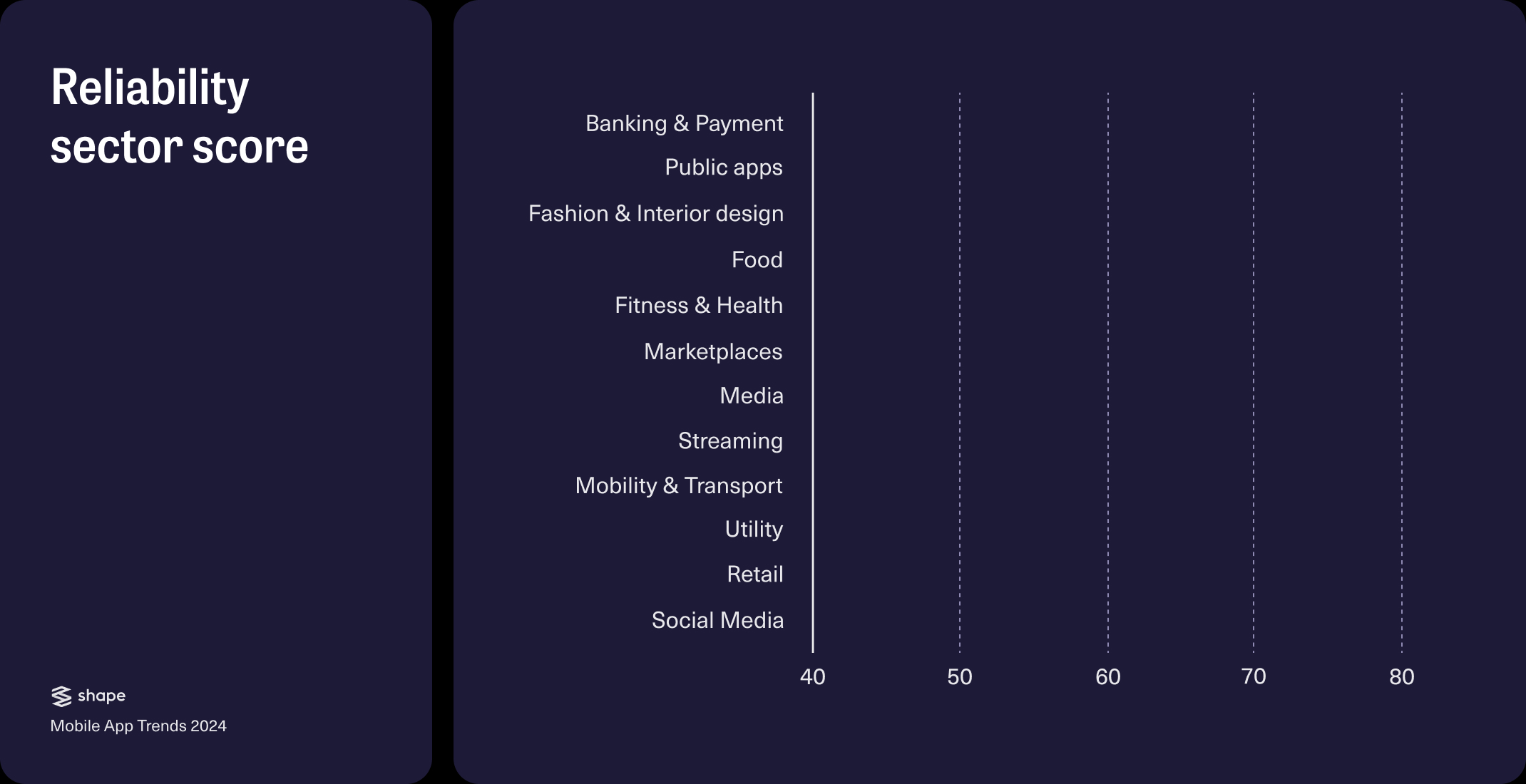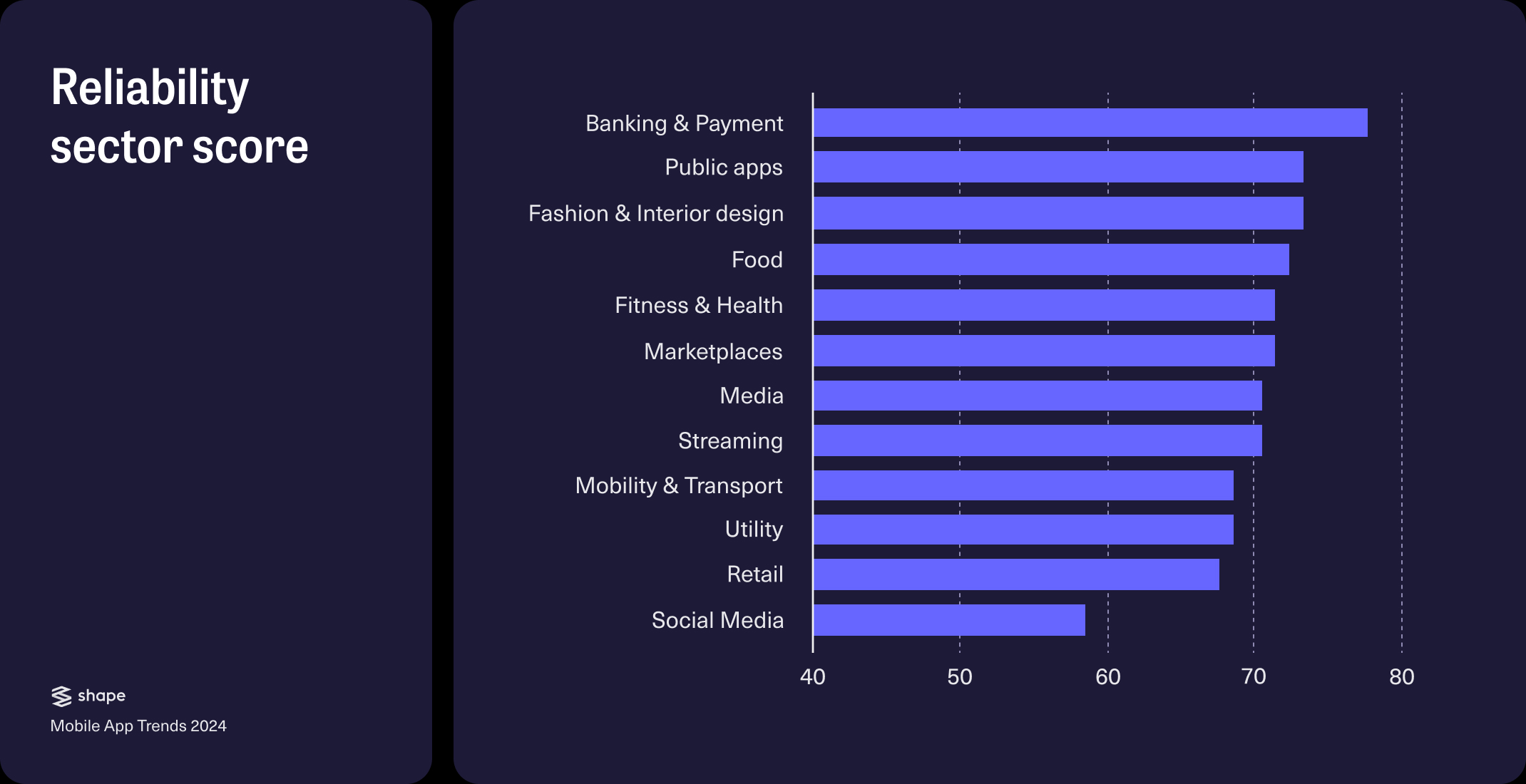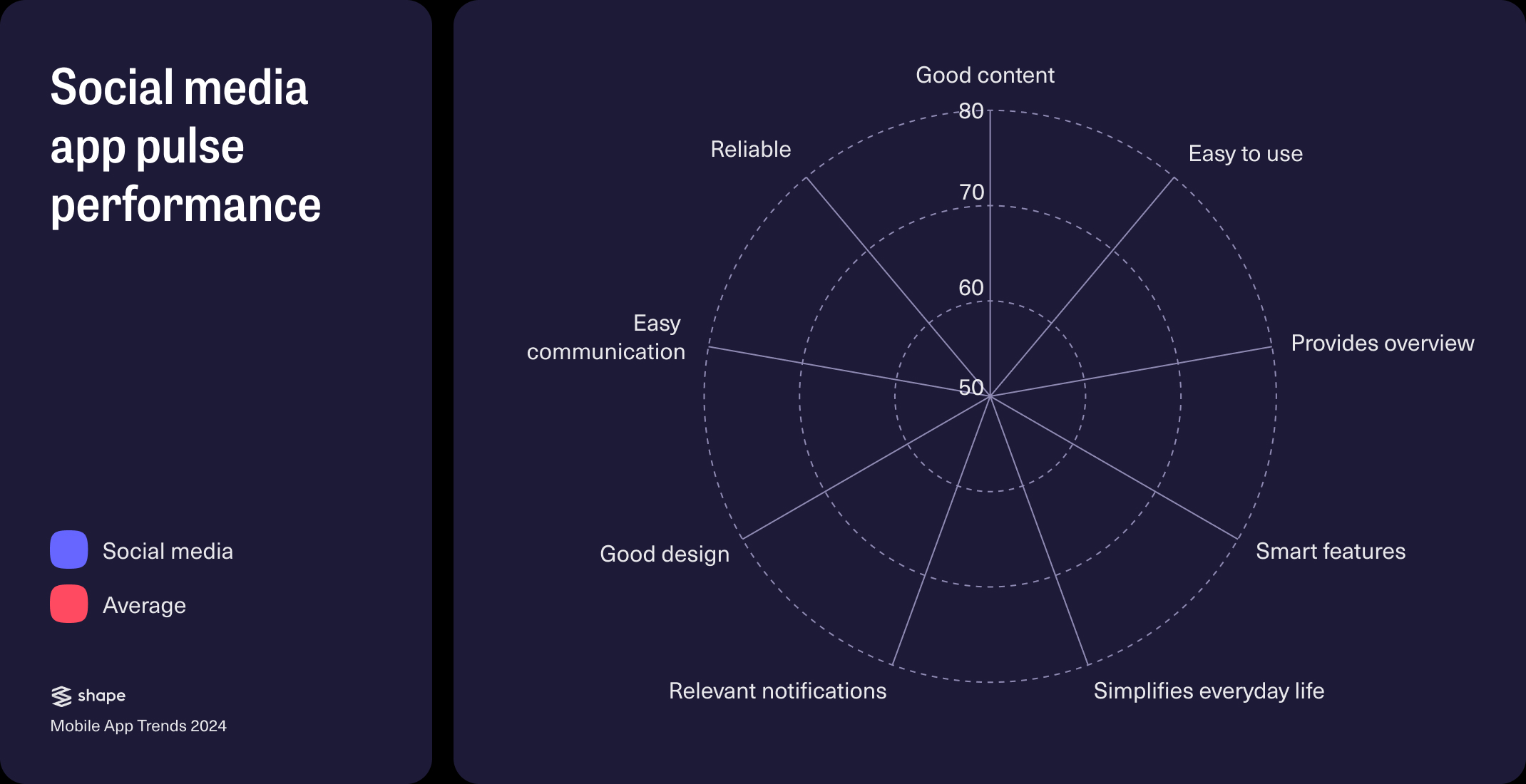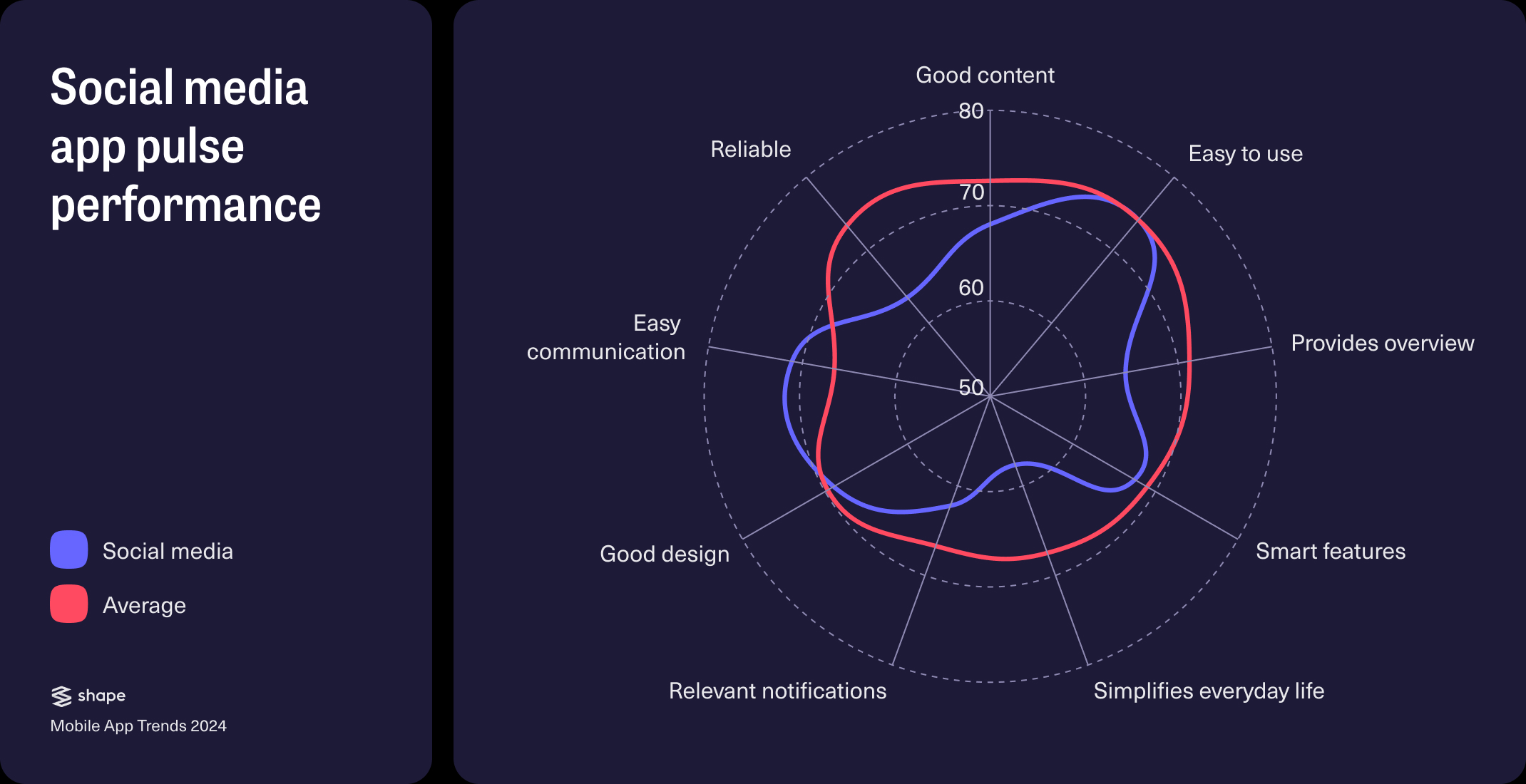
The Loyalty Advantage: How Reliable Apps Drive Growth
In the digital realm, reliability is crucial as it anchors trust and fosters enduring loyalty from users.
Loyal Users: The Backbone of Sustainable App Revenue
Loyal app users represent a bond between the user and the business, built on trust, satisfaction, and mutual benefit. This bond can drive growth, innovation, and long-term success for businesses.
💶 Steady Revenue Stream
Loyal users are more likely to make repeat purchases or use the in-app services frequently. This results in a more predictable and steady revenue stream, reducing the uncertainty associated with acquiring new users.
💰 Cost Efficiency
Acquiring a new user is often more costly than retaining an existing one. Loyal users reduce the pressure to constantly invest in new user acquisition, allowing businesses to allocate resources more efficiently.
💬 Free Marketing & Word-of-Mouth
Loyal users tend to talk about their favourite apps. They share their experiences, recommend the app to their friends and family, and may even leave positive reviews on app stores. This word-of-mouth marketing is organic, genuine, and can be more effective than paid marketing.
⌛ Higher Lifetime Value (LTV)
Loyal users tend to have a higher LTV. This metric represents the net profit a business makes from a particular customer throughout the duration of their relationship. A higher LTV is always desirable because it means a user continues to bring value to the business over time.
🤝 Better Feedback Loop
Loyal users are often more invested in the product, so they're more likely to provide feedback, report bugs, and suggest new features. This can be invaluable for the product development cycle, as businesses can make improvements based on this direct user input.
🦸♂️ Brand Ambassadors
Beyond just word-of-mouth marketing, loyal users can become brand ambassadors. They might create content around your app, showcase it on their personal platforms, or even wear branded merchandise. Their loyalty can thus translate into visibility and credibility for your brand.
🚪 Reduced Churn Rate
Churn rate is a measure of the number of users who stop using an app during a given period. A high churn rate can indicate dissatisfaction and can be costly for businesses. Loyal users, by definition, are less likely to churn, ensuring a more stable user base.
🔮 Predictable User Behaviour
Over time, businesses can gather data on loyal users and understand their behaviour patterns. This predictability can help in refining marketing strategies, improving app features, and tailoring personalised offers.
🏌️♂️ Competitive Advantage
In highly competitive markets, having a strong base of loyal users can be a significant competitive advantage. It can deter new entrants or help the business withstand competitive pressures from rivals.
🤗 Trust and Relationship Building
Having loyal users signifies that a trust-based relationship has been established. This trust can be leveraged for launching new features, products, or even entirely new apps.
This is paramount because perceived unreliability significantly dampens users' willingness to establish a robust relationship with an app. This reluctance can manifest diversely; users might use the app, but may hesitate to engage deeply with its services, or may display a propensity to explore and switch to more reliable alternatives. In almost all instances, an unreliable app simply hurts your reputation.
Reliability is undeniably crucial, yet Mobile App Trends reveals it's a parameter where not all apps measure up successfully. On a category level, especially social media apps show a potential to improve, being the app category with the lowest deemed reliability on average. However, the study also reveals that retail, utility, mobility, and transport apps also rank below average and therefore have potential to improve.


Why do so many app categories seem to score below average on reliability?
Essentially, it may come down to two things:
👉 Technical robustness
👉 Service credibility
While a lot of factors may be attributed to the perceived reliability of an app service, these constitute the major pillars that hold up the edifice of product reliability. In the following we explore what these entails and how to obtain them.
The Make or Break Factor: Technical Stability and App Reputation
You cannot underestimate the impact that technical glitches and bugs can have on your app's reputation, particularly in public forums like app store ratings. You may have an exceptional service, but when users run into issues, they won't hesitate to voice their frustrations. In fact, research by Bugsnag reveals that just a 1% lower stability score can lead to a drop of almost one whole star in the App Store. That is a staggering impact of technical stability. Not only may it cause existing users to churn, but it may also prevent new users from downloading your app due to unimpressive store ratings.
The importance of technical reliability to your users is quite understandable. Your users need the confidence that your app will consistently deliver when they most need it to. You can easily imagine how crucial this is especially for digital enablers.
Achieving such technical reliability is complex and requires conscientious decision-making throughout various stages of product development. It is no easy undertaking, but there are a few key points to keep in mind to reduce issues in both the short and long run:

🚀 Go Native for Development
Native apps generally offer superior user experience and performance compared to cross-platform solutions. A native approach allows for direct OS integration, reducing complexities and third-party dependencies. This typically results in a more stable and less bug-prone application. Additionally, native development helps you stay in sync with platform updates, thus minimising technical debt.
🧱 Adherence to Best Practices
Throughout development, commit to high standards by conducting peer reviews, and closely following coding guidelines. Quality Assurance (QA) tests, including unit, exploratory, smoke, and scenario tests, are non-negotiable and indispensable for identifying issues early on.
🧩 Modular Codebase
Organise your code into well-defined modules or sections. This not only simplifies maintenance but also minimises the ripple effect of changes, making it easier for developers to collaborate without jeopardising the app's overall stability.
⚒️ Be Selective with Dependencies
Choose your project's dependencies wisely. Opt for those with robust documentation, active communities, and regular updates. Steer clear of dependencies with known vulnerabilities or inadequate maintenance, as these can compromise your app's reliability.
By incorporating these strategies, you lay down the right foundation to minimise technical debt and prevent issues from facing the users before it’s too late.
Beyond Technical Reliability: The Role of Service Credibility
Perhaps equally as important to technical reliability is service credibility. While technical reliability asks, "Is it operating consistently?", service credibility delves deeper into the realm of user intent, making users ponder, "Is it operating to my benefit?"
Building Trust Through Transparency: Data Privacy Strategies
In this day and age, more users have become aware of the fact that nothing comes for free, also not in the digital space – and when technical giants like Google and Meta are able to offer tremendous services for free, the price you pay is, essentially, your own data.
Data privacy emerges as a cornerstone in establishing service credibility, fundamentally determining whether your service manages user data with utmost care and integrity. It goes without saying that all app services must comply with legal regulations, however, once you’ve guaranteed your legal integrity, there are strategies that can be applied in order to increase your chances of building trust in your data handling.
A simple, but powerful strategy is to communicate your intent: Before asking for data permissions, may it be to collect geolocation data, send notifications or display personalised content, communicating what data will be collected and for what reasons gives the users a feel of transparency, leading to sense of honesty and trustworthiness in your application. In apps, this mostly takes the form of a carefully designed onboarding process that introduces the users to your apps key features and why they need data to function.
The compromised reliability scores of some social media apps as depicted earlier could be attributed to their non-transparent data practices. Many such apps, including Facebook and TikTok, heavily rely on data collection while providing minimal insight into data processing, algorithmic interactions, and overall objectives, consequently diminishing service credibility due to the unaddressed uncertainty.


Nurturing Credibility: Strategies for Information Accuracy
Another key component of enhancing service credibility is accuracy in information presentation. This issue is more difficult to design a solution for, as it largely comes down to asking yourself as a business owner: Does my service provide a correct and fair interpretation of facts?
However, it is crucial to acknowledge that certain information may inherently contain uncertainties or might be beyond the control of service providers. For instance, apps providing predictive data, like weather or price forecasts, may occasionally be imprecise. In such cases, credibility can still be maintained if the inherent uncertainties are clearly communicated.
In scenarios like social media platforms, where information is predominantly user-generated, it may be expected that users apply a healthy amount of scepticism. Nevertheless, platform providers can bolster their credibility by implementing robust practices to combat misinformation and by ensuring users are aware of these mechanisms. Employing moderators, providing options to report incorrect information, and proactively scanning for potential falsehoods are all viable strategies to maintain a truthful and reliable information ecosystem.
Service credibility is a multifaceted concept, intertwining user trust, data privacy, and information accuracy. By acknowledging and addressing these aspects proactively, service providers can cultivate an environment of transparency and reliability, essential in today's competitive digital landscape. Balancing technical proficiency with ethical and user-friendly practices is the key to developing applications that resonate with users and stand the test of time.
Reliable apps are essential for fostering user loyalty, which leads to numerous benefits for businesses, and to achieve reliability, apps must focus on two main pillars: technical stability and service credibility.




